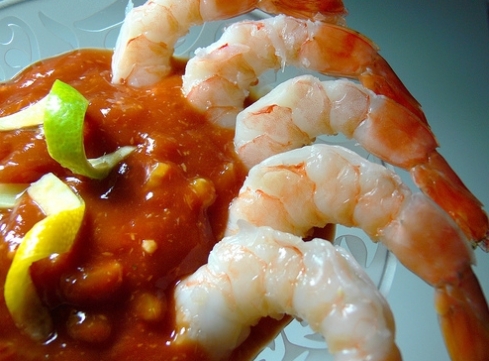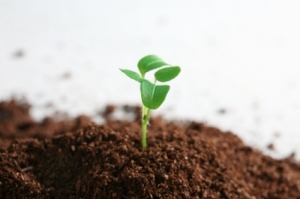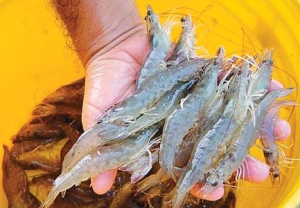You are currently browsing the tag archive for the ‘Modern Aquaculture’ tag.
British Columbia Receives CAD 930K for Eco-Aquaculture Projects / July 2009
The Minister of the Department of Fisheries and Oceans (DFO) announced that Federal funds are being offered through the Aquaculture Innovation and Market Access Programme (AIMAP) to:
• Testing net biofouling management technology
• Capturing and reusing fish effluent
• Introducing new mechanized clam harvest and automated oyster grading technology to BC
• Testing ultraviolet light as a water discharge sterilizer
• Adopting a parasite suppression technology for farmed salmon
Related Seafood articles:
– Investments earmarked for deep water mussels
– DFO invests USD 306 mln in maritime economy
SOURCE: By Natalia Real
editorial@fis.com
www.fis.com
|
The information contained in this report is very important to modern aquaculture and the Island Bounty SA objective:
Research Project: TROPICAL AQUACULTURE: DEVELOP FEEDS FOR OPTIMUM NUTRITION OF CULTURED SHRIMP AND FINFISH
Location: Tropical Aquaculture Research| 2005 Annual Report
End Date: Jan 25, 2010
Aquaculture feed needs to be consistent with what we are trying to sell the the people; the end consumer. It is a fact: “we are what we eat.”
Shrimp and other products made in aquaculture raceways will become what we mold them to be. If the live product is fed too much corn meal we see a higher level of Omega 6 fatty acids.
Lower the corn meal in the feed and implement higher quality meal consistent with Omega 3 fatty acid and we see higher levels of the “good cholesterol.”
Feeding with fish meal saturated with the right antioxidants promotes not only good health and growth in shrimp , but a healthier product to the end consumer. This has been proven through research.
The Island Bounty approach is to take the best feed program that exists in the aquaculture industry (we have it already), then increase certain nutriments and test the animals at harvest.
Traditionally, many aquaculture farmers feed their stock what they can buy locally and at a good price. The farmers are only really concerned with increased weight and not quality of the nutriments you will receive while eating their product.
It is our firm conviction that we can achieve both in a happy medium. Good fast growth and a quality, healthy, consumable product. A product which contains better levels of nutriments than industry standards.
This will take continued research and quantifiable testing measures. We do believe, after comparing studies, the data can be obtained to assist us in our nutritional marketing, maintaining good health in our product, and passing on the benefits of healthy, clean, aquaculture practices on to our consumers, while aiding the world food crisis.
Aquaculture Research Details:
Start Date: Jan 26, 2005
End Date: Jan 25, 2010
Objective:
Problem to be Addressed: A critical need and unique opportunity to address the feasibility of locally produced feeds for the aquaculture industry.
Develop a cooperative effort towards the goal of establishing long-term sustainability of the aquaculture industry. Objective 1: Define the nutrient requirements of aquaculture species in the state, especially the Pacific threadfin, longfin amberjack, and Pacific white shrimp. Objective 2: Identify and test regionally available plant and animal by-products for their nutritional composition and bioavailability in aquaculture feeds, and produce nutritionally complete diets for evaluation. Objective 3: Test the effectiveness of the produced feeds on commercial scale through collaborations with University and commercial partners.
Research Project: Tropical Aquaculture: Develop Feeds for Optimum Nutrition of Cultured Shrimp and Finfish Project Number: 5320-31000-007-00
Project Type: Appropriated
Aquaculture in Ecuador:
Finds Big Market for Farmed Shrimp in Germany
According to the Ministry of Foreign Relations, Ecuadorian exports of shrimp to Germany soared to $2.5 million in the first three quarters of 2008, compared to $277,000 in the same period in 2007.
Source: FIS United States. Tuna and shrimp exports to Germany soar. Analia Murias (editorial@fis.com). January 12, 2009.
Southeast US Aquaculture Programs and Resources: Contacts by State
Alabama
Department of Fisheries and Allied Aquacultures, Auburn University

Auburn University Aquaculture - Working in Uganda - with permission to blog image from the Auburn University Flickr Photostream
Outline of research programs on marine fisheries management and aquaculture, particularly in Alabama’s coastal region.
203 Swingle Hall l | Auburn University | Auburn, Alabama 36849
Phone: (334) 844-4786 | Fax:(334) 844-9208
Photo
Florida
Mote Marine Laboratory Shrimp Research Program, Sarasota
This project has been initiated to develop sustainable shrimp farming techniques in low salinity inland waters.
Shrimp Aquaculture Staff
Program Manager – Ryan Gandy
email: rgandy@mote.org
Mississippi
Department of Agricultural Economics, Mississippi State University
A partnership between the Risk Management Agency (RMA) of the United States Department of Agriculture and Mississippi State University (MSU) is conducting a large-scale study known as the National Risk Management Feasibility Program for Aquaculture (NRMFPA).
http://www.agecon.msstate.edu/aquaculture/index.php
Project Manager: Corey Miller 662-325-0848
South Carolina
South Carolina Department of Natural Resources
The mission of the SCDNR fish hatchery program is to propagate those species of fish in sizes required to accomplish fishery management objectives as recommended by the biological staff and approved by administrative personnel.
The SC DNR has many offices located around the state. The main office info is listed for those interested in any of the programs they have to offer.
http://hatcheries.dnr.sc.gov
Street Address: 1000 Assembly Street, Columbia, SC 29201
Mailing Address: P. O. Box 167, Columbia, SC 29202
Director of SC Environmental Programs: 803-734-3766
Texas
Texas Agricultural Experiment Station Shrimp Research Program
| Acronym | TAES | |
| Address | 4301 Waldron Rd. C.C. Corpus Christi TX Texas 78418 United States |
|
| Tel | (361) 937-2268 | |
| Fax | (361) 937-6470 | |
| Activities | Education & research associated with characterization of aquaculture effluent waters and the development of cost effective treatment/prevention methods. Intensive nursery and grow-out system for pena | |
Island Bounty Aquaculture System
Within the Island Bounty Aquaculture System, the fish, shrimp or seafood product are confined in a pond so that their health and feed can be closely …Read More about Aquaculture Technology
Written by The Naib
Nearly half of the seafood we eat today is farmed. And while aquaculture is often equated with pollution, habitat degradation, and health risks, this explosive growth in fish farming may in fact be the most hopeful trend in the world’s increasingly troubled food system, according to a new report by Worldwatch Institute.
In Farming Fish for the Future, Senior Researcher Brian Halweil illustrates how, if properly guided, fish farming can not only help feed an expanding global population, but also play a role in healing marine ecosystems battered by overfishing.
“In a world where fresh water and grain supplies are increasingly scarce, raising seafood like oysters, clams, catfish, and tilapia is many times more efficient than factory-farmed chicken or beef,” says Halweil. “Farmed fish can be a critical way to add to the global diet to hedge against potential crop losses or shortages in the supply of meat.”
“But not all fish farming is created equal,” Halweil notes. Carnivorous species like salmon and shrimp, while increasingly popular, consume several times their weight in fish feed—derived from other, typically smaller, fish—as they provide in edible seafood. “It generally requires 20 kilograms of feed to produce just 1 kilogram of tuna,” Halweil says. “So even as we depend more on farmed fish, a growing scarcity of fish feed may jeopardize future expansion of the industry.”
“The early Hawaiians took advantage of natural fish ponds near the ocean. The seawater seeps through cracks in the lava (too small for fish to escape) and combines with spring water to create a brackish pool of filtered water.” – Image Description.
Aquaculture as we know it today has Ancient roots. It is well documented that Aquaculture had its beginnings in China somewhere around 2,500 BC.
Carp were held up in artificial ponds for use as a source of protein and their “brood” were used to feed their exotic, and much coveted, silkworms. Through breeding and genetic mutation, those Carp became what we know today as the common Goldfish.
The Romans kept fish ponds for both food and enjoyment. The Ancient Hawaiians pioneered Aquaculture; raising both fish for food and plants for consumption, and aesthetic beauty. Their aquaculture centered on lore and mythical gods and deities. Thus aquaculture had a very significant role in their everyday life aside from being “just for food.”
Modern Aquaculture, as we know it, is a new animal. It is relatively “new” because the need for a reliable source of healthy, sustainable food has steadily increased as our Earth’s population has exploded. The ocean can only yield so much (much to the lament of modern-day Fishermen and Shrimpers).
Following the tradition of the Ancients, the wise thing to do was to create a better way to feed the Earth’s population. “Underwater Agriculture,” “The Blue Revolution,” “Fish and Shrimp Farming,” – call it what you like, the reality is the same.
The Ancient Art of Aquaculture has evolved today into a way to feed a multitude…for a fraction of the cost, with less waste, more quality control and, when implemented correctly, a “clean-green” source of protein for the benefit of all.
We cannot “Save the entire World,” yet. However, what we can do, is start by making sure that in our Communities, people are being educated about Modern Aquaculture Technology. We can start by pioneering fresh, new ways to produce disease-free seafood. We can start a new way of looking at how we eat, what we eat…and “how” it gets “here.”
That’s what Modern Aquaculture is all about and that’s the very core of what Island Bounty, SA stands for.







